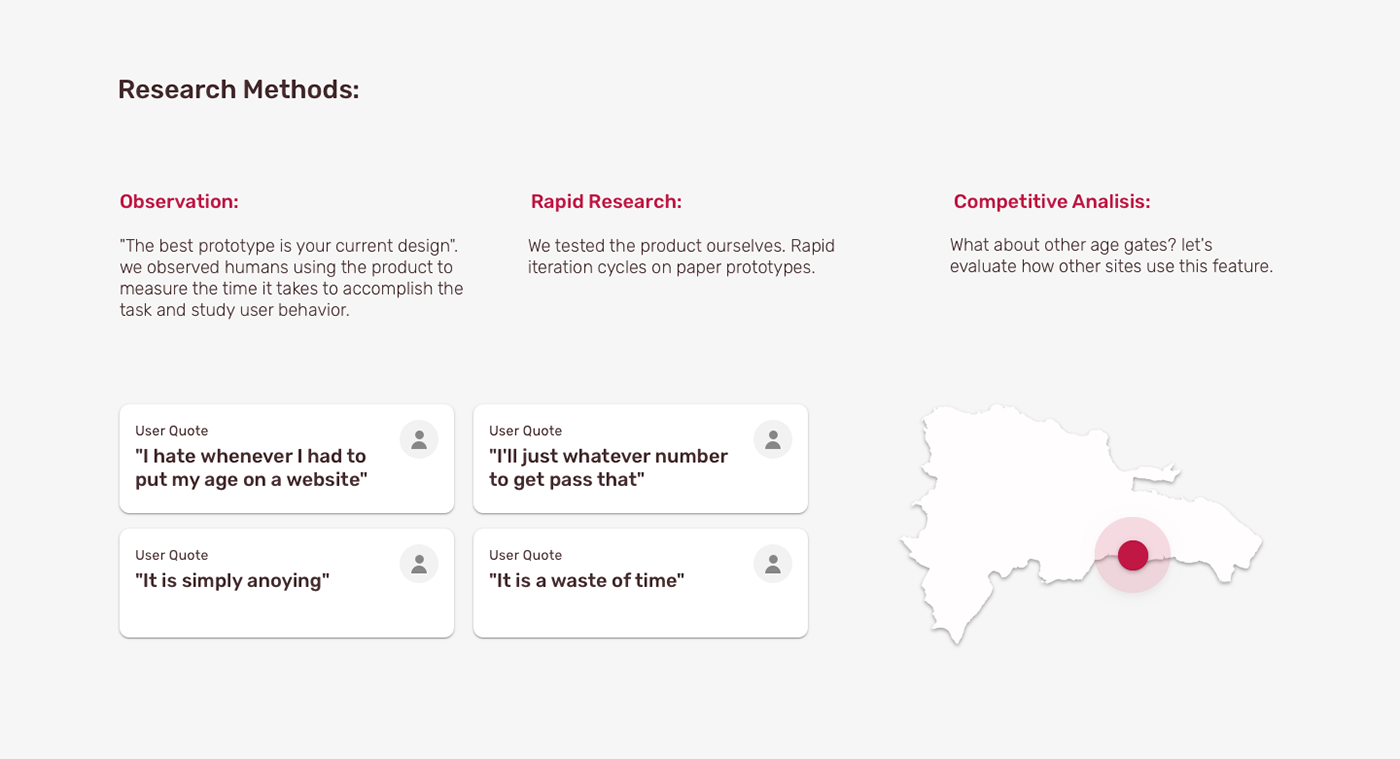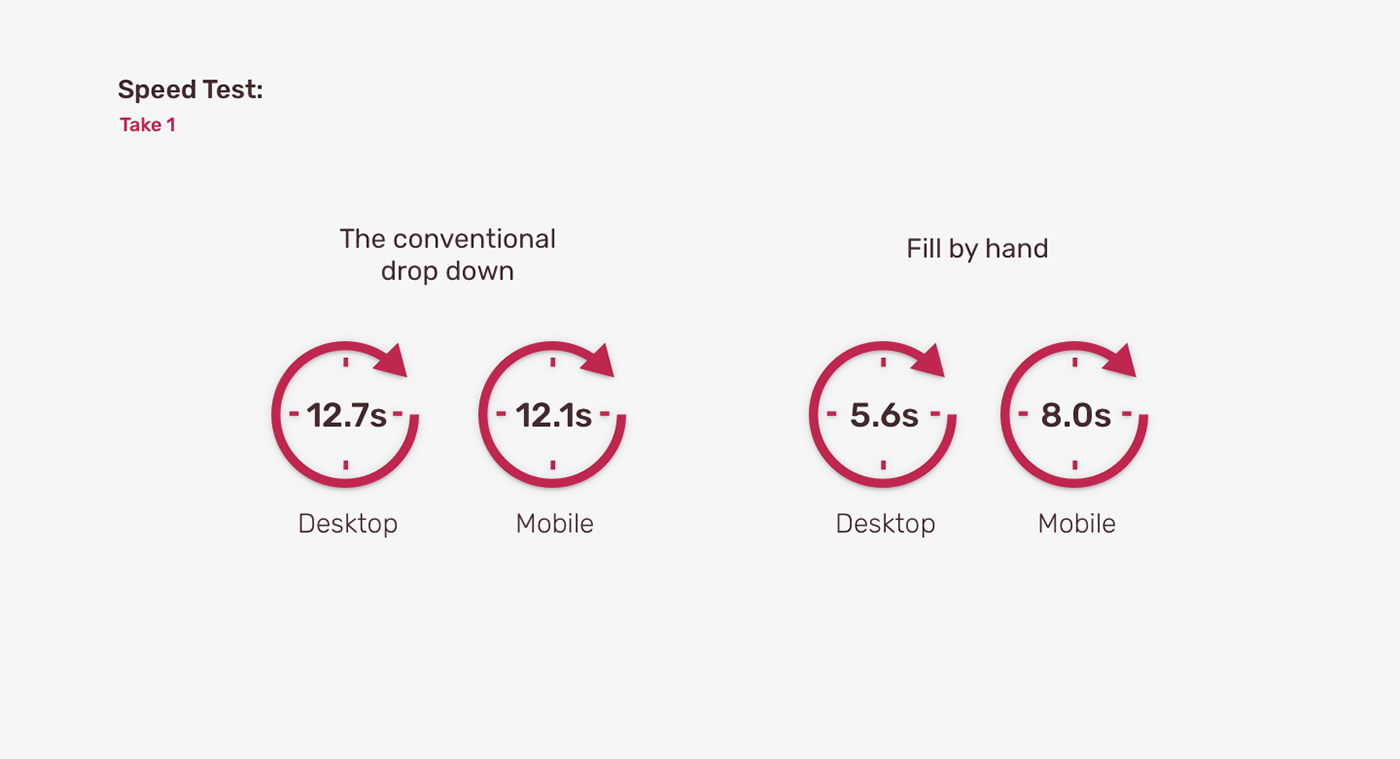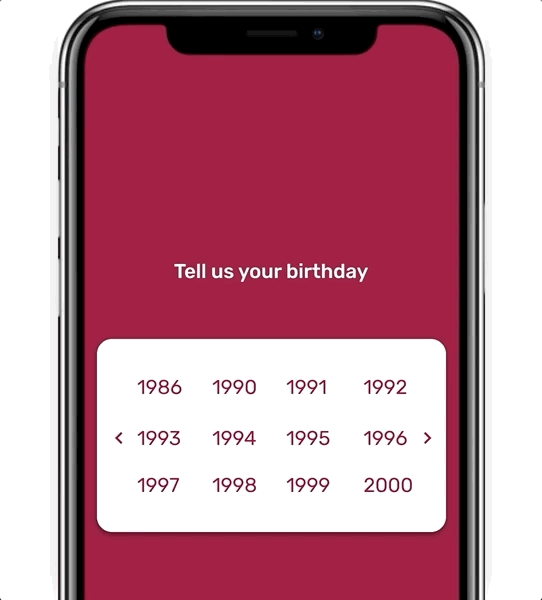A data-driven age verification system
Designing a better and faster age gate.
We all know age gates. For those who are not familiar with it, they are also known as Adult Verification Systems "these are computing systems used by websites to confirm that users attempting to access their website are legally adults."
My role in this project was UX Designer.
THE PROBLEM
Age gates create a high bouncing rate on websites. By having a quick look at the client analytics, we found out that most users don't get pass through the gate.
By law, alcohol-related websites must have an "Age Gate" where users must prove his or her age with their full birth date: year, month, and day.

HYPOTHESIS
An "Age Gate" is a pain point in the user's journey because of the time the user needs to invest before accessing the website.
On mobile, which represents 92.7% of the visits, searching for a year value in a drop-down or writing it down is time-consuming and, in many cases, frustrating.
"The simple fact that a feature has been around for decades does not mean that it can't be improved."

Competitive Analisis:
We found out that our competitors, both national and international, are not paying enough attention to this problem. In essence, we found out two patterns: "The conventional drop-down" (the one we were using), and the "Fill by hand."

First attempt:
First, let's remove all visual distractions from the users, so they only see what they need to. Otherwise, if the content won't be in use, it is going to be hidden. Then we are going to put both patterns against each other in a controlled experiment to see which is indeed faster. We opt to do a probability sampling test.
For the test, we run an ANOVA analysis and other methods to make sure our results had enough participants to detect a statistical difference.

It was then evident that if a human is filling the information by hand, it is going to be faster. Also, when a user finishes typing, their day of birth instantly passes to the month, and so on until the users land to the site, making it a bit faster.
But It was not fast enough on mobile. And many users will fill whatever number is on their head to skip forward to the "real deal."
Designing with data:
After a lot of iterations on paper and low fidelity prototypes, we manage to develop a better input on a calendar-type layout. The product is going to ask for the year of birth first, then the month and finally the day. For almost an instant year search, we group years on a block of 12 items, the first group of years shown represents 92% of the traffic on the site of this particular client. Any other user won't swipe more than one time to find his date of birth.

The final test:
Since the product got tested a lot of times through the process, I was very confident that we had a better version of the "Adult Verification System" with our data-driven approach. Still, we had to test it against the others on the same controlled experiment to have a final result.

The results were very satisfying; we manage to build a faster interface both on mobile and desktop. Users will get past through the gate "as if the gate was open."
Also, now that we have the exact birth date of our users, we can use this data and combine it with other sites' modules to make great little experiences like surprising our customers with a free beer on their birthday.

